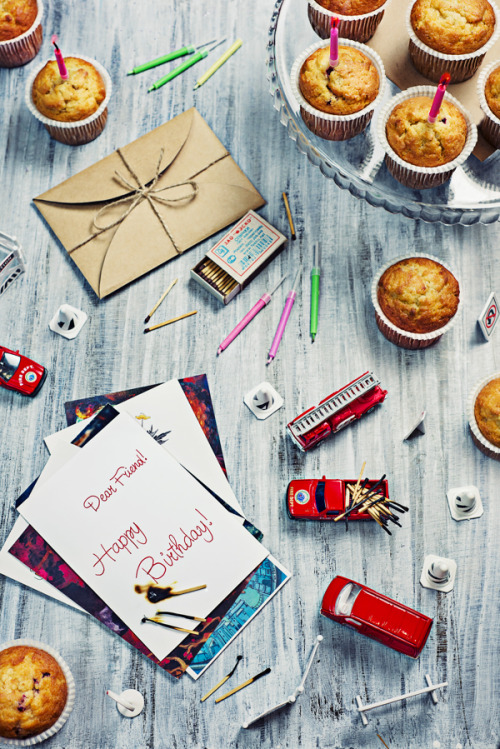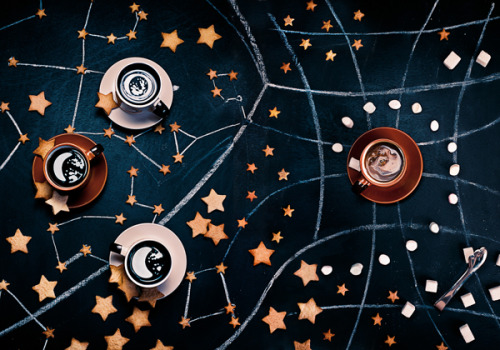A little magnificent world: interview with Dina Belenko Do you remember when you were a kid an
A little magnificent world: interview with Dina Belenko Do you remember when you were a kid and you used your toys to build and create a scenario? For example, as far as I remember, I liked to create cities with lots of houses, streets, and people (some of them were teddy bears, of course) and then I would imagine that the city experiences a natural disaster like something from the “Godzilla” movie. If you did something like that, Russian artist Dina Belenko should successfully bring you back to your childhood. “Prongs of the fork can become a dark forest; powdered sugar can turn into a snowfall.” – said Dina to me, when I asked her to describe the photography style she’s doing. Dina transforms various items and creates a gorgeous world or situation that she can capture with her camera. “It’s not only about transformations, it’s about the way everything is connected in the small world set around us” – she elaborates her thoughts to me. It is, indeed. And I was very curious about how she decides what situation she wants to create and capture; how she sees the world through her eyes. So I asked her several questions, and now, finally, I can present the answers to you. You’re focusing on a photographic style that explores the large world through small items. How did you find yourself in such style of photography?When I began studying photography, I tried various genres: landscapes, portraits, street. Eventually I understood that what interests me lies not in tracing some events and retelling stories of some happenings, but in creating tales of my own and the easiest way to do this is when you have control over all the objects in your shot. You may see yourself as a director that giver orders to cups and cookies. Your art requires a lot of creativity because you have to create the situation by yourself with various things. How do you decide which of them are you going to use?I always make a sketch before shooting. It’s not usually detailed, but it helps to define the topic, location and mood, as well as to grasp the overall composition and required objects. I try to keep only the most needed things in the frame, those that would work for the shot, and get rid of all I think as unnecessary. Somehow I feel that the question “Why do I need this thing?” is very important. If the object doesn't become a part of the story and is not affecting the composition in any way, then maybe the shot will be better off without it. Why do you think it is actually important to be capable of seeing the world differently?I think it’s really fascinating: all these connections between things, their small transformations, their secret life and even simple comparisons in a “what does it look like” game help us understand how everything is set up. How does our mind work to find these connections? How does the world build them? You may imagine yourself as an explorer, like David Livingstone, in a world of inanimate objects. I don’t really know if it has any real importance, but anyway, it’s very interesting. Which emotion is the hardest to express through art? Why?That’s a good question. I don’t know. I feel that the subtler an emotion is, the harder it is to express through art. Anyone can imagine such basic emotions as happiness, anger, amazement, fear or grief. But when it comes to mixed feelings which are difficult to explain, it becomes rather complicated. This “cocktail” is very hard to express. Yet look what actors do – they always come up with something: the pose, look, turning of the head, and we can understand everything without words. I think that such things can be done for any emotion in photography as well. Is there any art form or artwork itself that you do not appreciate? Why?Hmm, it’s hard to tell. There are things I prefer to others and there are genres that I don’t personally like. But I think that if there is some beautiful work in any of these genres, I am able to appreciate it. I don’t like works that simply trace the reality (like documentary) without altering it. One can simply look out of the window to see the real world. Something new, created not by the real state of things, but by the hand of the artist, is far more interesting. How do you see and imagine photography in 10 - 15 years?I don’t know much about the state of things in other genres to make predictions, but I hope that there will appear more authors, who practice still-life. I mean not only those who take beautiful compositions with flowers and fruits (though this also requires a lot of work), but also those, who try to make their still-life shot conceptual, metaphoric, narrative. Those who tell stories. Like, for example, Catherine MacBride or Dan Cretu. This is a rather young genre, and it will be really great, if more authors like them appear. What do you value in your life most and why?Being able to do what you like and being able to learn to become better. I belong to the kind of people who think that their work is themselves. That’s why I think that the job you like and do well is the most important thing to be. What is your biggest dream at the moment?Honestly? Maybe it’s to become the best in my field. I know it’s a long and hard way, and that I’m standing at it’s very beginning, but everyone has to start from something. This dream may never come true, but it doesn’t mean it isn’t worth a try, right? How do you spend your leisure time and how does it help you to remain inspired?The best way to keep yourself inspired is to do something new every day to receive new experiences and impressions. You are out of ideas and don’t know what to shoot? Just ask yourself: “What have I never done before or haven’t done in a long time?” You can ride a bicycle, bake a cake, blow huge soap bubbles, go fishing, learn to juggle, try to fold a horse from a piece of paper, play football, swing on swings, find an old computer game and replay it, even reread a favorite book. These may sound childish, bud they bring so much joy! This really helps to overcome the crisis and gives inspiration. For example, I never skated on roller skates – I’m keeping it for a rainy day. Edited by Melissa Searle -- source link
Tumblr Blog : republicx.tumblr.com
#crafts#dina balenko#photography#surreal#interview#artwork




